Are Pet Birds Annoying? Understanding Their Behavior
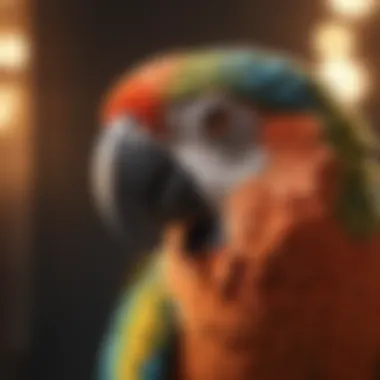
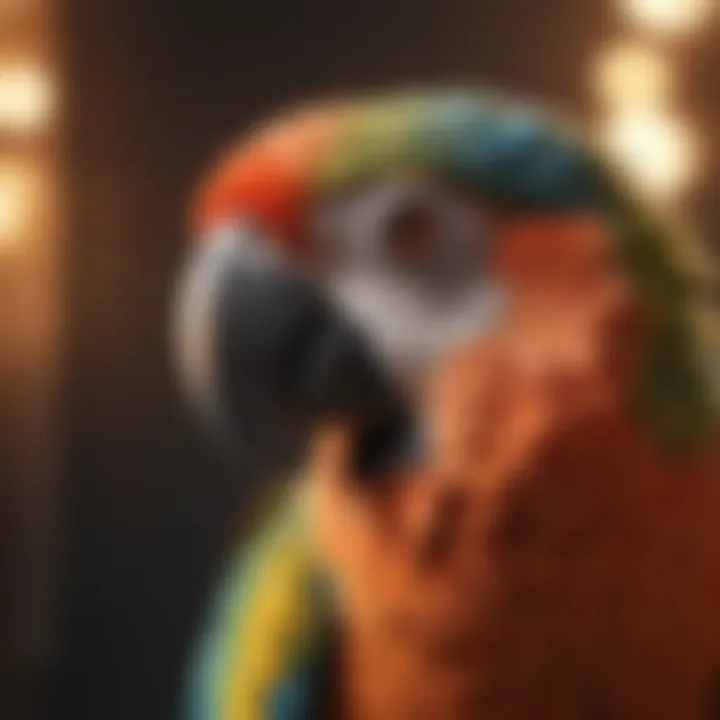
Intro
Pet birds have garnered attention as companions that bring joy to many homes. However, amidst their charm, some owners encounter elements of behavior that they consider annoying. Recognizing an issue does not imply irresponsibility; instead, it can lead to improved relationships between birds and owners.
Understanding both the ends and outs of pet bird ownership is crucial. This exploration will delve into specific topics like care tips, behavioral insights, nutrition guides, wellness, and enriching activities. Each area serves a purpose to create a well-rounded approach for pet owners and to enhance the overall experience of living with these birds. By discussing various behaviors a bird might exhibit, in conjunction with the habits that motivate those actions, we bridge the gap between annoyance and companionship.
In this balancing act of expectations and realities, the exploration promises insight on proactively addressing issues while fostering a satisfying interplay between man and bird. Standards will differ across species, capability for social engagement, and even within one owner's expectations versus another's. Knowledge here will improve understanding paramount to creating a harmonious environment.
Understanding Pet Birds
Understanding pet birds is pivotal for both current and potential bird owners. The nuances of avian behavior, including their unique needs and characteristics, are not always simple to grasp. This knowledge can make the difference between a frustrated owner and a satisfying companion relationship. Owning a bird requires not only selection but adaptation to the lifestyle changes this pet brings.
Defining Pet Birds
Pet birds are avian species typically kept as domestic companions. These birds differ in size, color, and personality traits. Unlike wild birds, pet birds are bred and raised within controlled environments. Domestic species come with particular behavioral needs and social constructs that owners should immediately recognize. Understanding what constitutes a pet bird helps in acknowledging their inherent needs and shifting dynamics in human-animal interaction. The main point in defining them involves recognizing their dependency on their owners for appropriate care and environment, which in many cases extends beyond feeding and housing.
Common Species of Pet Birds
Many species are popular among pet owners. Some such as Budgerigars, known as 'budgies,' are favored for their small size and vibrant colors. Other commonly kept birds include Cockatiels for their friendly temperament, African Grey Parrots for their intelligence, and Lovebirds that require social interaction.
- Budgerigars
- Cockatiels
- African Grey Parrots
- Lovebirds
- Canaries
- Finches
Each species brings different charm and companionship. The behavior of these species varies significantly, leading to varying levels of companionship or potential annoyances. A Cockatiel, for example, may replicate sounds well and engage actively, while a Canary may sing beautifully but require less interaction. Recognizing these differences elevates the standard of care a bird owner must provide.
Natural Behaviors of Birds
Birds exhibit a series of innate behaviors crucial for their well-being. These behaviors can range from vocalization, flight, social bonding and foraging. They strive to establish hierarchies when living in groups both with their kind and with humans.
Vocalization behaviors: This is inherently tied to their means of communication. Birds vocalize for a variety of reasons, including establishing territory or attracting a mate. In a home setting, this behavior may manifest in extreme levels of noise, posing a challenge for some owners.
Foraging behavior: Birds are instinctive foragers. They prefer to engage in activities that stimulate their interest and mitigate boredom. Through natural foraging behaviors, they express themselves freely, leading to enjoyable and stimulating live sequences.
As owners, understanding these behaviors facilitates better care and more rewarding experiences. Recognizing and addressing these natural behaviors helps create an environment that nurtures their psychological and physical happiness, ultimately helping prevent nuisance behaviors that may cause annoyance.
Important Note: Failing to understand a bird's natural behaviors can result in stress for the bird itself and frustration for the owner, escalating the problem further.
Factors Contributing to Annoyance
Understanding the factors that contribute to the potential annoyance caused by pet birds is essential for current and prospective owners. This section explores vocalization patterns, destructive behaviors, and social interaction needs. By understanding these factors, owners can manage expectations, improve their experience, and enhance the relationship with their birds.
Vocalization Patterns
Birds are known for their vocal abilities, but this often leads to mixed feelings among owners. Some might enjoy the sounds of chirping and squawking, while others find it overwhelming. The vocalization patterns of different species can significantly vary. For example, parakeets often chatter frequently, while some larger birds might emit loud calls.
Several factors influence a bird’s vocal habits, including species characteristics, individual personality, and social stimuli. It is important to note the role that environmental factors play; isolation or boredom can lead to louder and more frequent vocalizations. Addressing such elements promptly can limit the noise burden on owners.
Understanding the variety of vocalization is crucial. Pet birds communicate not just for attention, but also for companionship, which can enhance interactions with their owners.
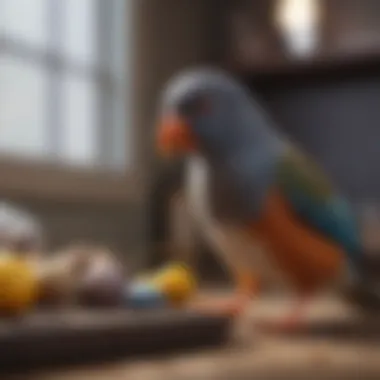
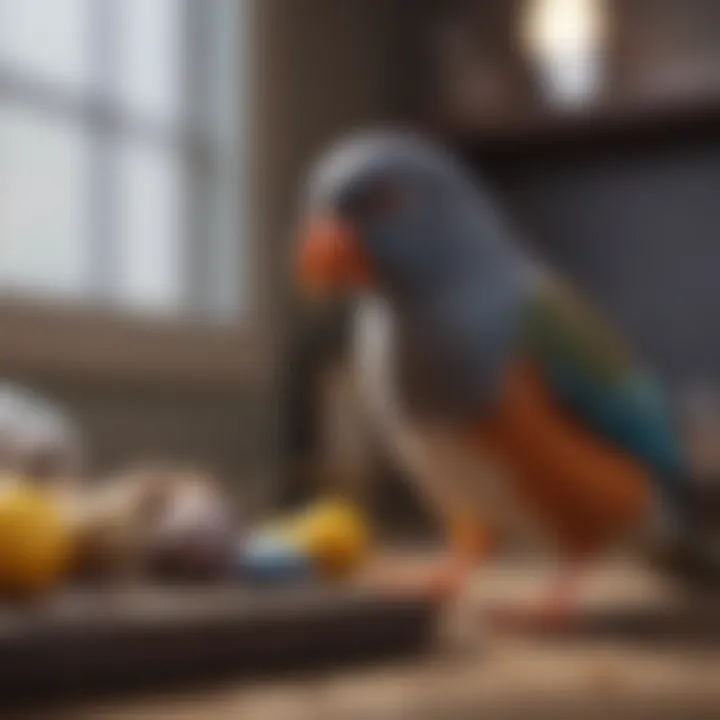
Those who plan to welcome a bird into their home should carefully consider how much noise they can tolerate. Certain species are better known for being quieter, such as canaries. Engaging modification through training can also play a role, encouraging desired sounds while discouraging less agreeable ones.
Destructive Behaviors
Pet birds, by nature, have a desire to explore and chew. This can sometimes translate into destructive behaviors. Such actions may typically include chewing furniture, shredding curtains, or even tearing wallpaper. While birds act out of instinct, their destructive tendencies can cause substantial frustration and annoyance for owners.
The level of destruction often varies among species. Species like Amazon parrots and cockatoos are particularly known both for their inquisitive behavior and the resulting damage to household items. Furthermore, lack of stimulation can exacerbate these actions, becoming problematic for both the bird and owner alike.
Solutions to minimize destructive behaviors start with providing appropriate toys and engagement activities. Encouraging safe outlets for a bird's natural tendencies can enhance their well-being and decrease their urge to destroy household items unnecessarily.
Social Interaction Needs
Most pet birds are particularly social creatures that thrive on interaction. Their need for companionship can lead to feelings of loneliness and frustration when left alone frequently. These feelings might manifest as unwanted vocalizations, or perhaps even self-destructive behaviors. Birds, particularly species like African greys and cockatiels, can develop strong bonds with their owners and expect regular interaction and stimulation.
It is vital for owners to recognize that social needs should not be overlooked. Spending adequate time with pet birds is essential for mental and emotional well-being. Those who lack the availability to provide this attention may find themselves in a challenging situation.
Establishing a regular schedule for interaction not only helps meet these needs, but also contributes positively to training and builds a stronger relationship between the bird and owner. Consideration of alternative approaches including adopting a second bird may also be a solution for individuals ready to take on the additional responsibility.
In essence, recognizing these factors—vocalization patterns, destructive behaviors, and social interaction needs—provides insight into common annoyances associated with pet birds. Being intelligent and proactive in addressing these areas can cultivate a more rewarding companionship.
Perceptions of Annoyance
Understanding perceptions of annoyance is crucial when evaluating the companionship of pet birds. Pet owners often have different expectations regarding their birds’ behaviors, which can lead to misunderstandings and conflicts. This section draws attention to elements such as owner expectations and factual realities, the influence of different bird Species, and the cultural perspectives surrounding pet Birds. The way pet astronomy are perceived shapes the experiences of bird owners and can either heighten enjoyment or detract from it.
Owner Expectations vs.
Reality
The expectations that owners have when acquiring a pet bird often diverge significantly from reality. Before bringing a bird home, potential owners may envision a serene companion that chirps gently and brings joy without demanding too much attention. However, the reality is often much more complex. Most species exhibit behaviors that are instinctual, playful, and sometimes disruptive. Loud vocalizations, scattering messes, and a need for social interaction may stem from the frustrations felt during routine activities.
Differences in expectations can be exacerbated by various factors. For example, a new owners might not be aware that many bird species require daily interaction and mental stimulation. Thus, the owner's lifestyle becomes a pivotal factor in nurturing their new companion's needs. Familiarity with the specific proponencies of the species can greatly assist in aligning an owner's experience with their expectations.
Influence of Bird Species
The specific species of pet bird gekozen has a substantial impact on how they are perceived in terms of annoyance. For instance, larger birds such as macaws and cockatoos tend to be more vocal and may engage in more destructive behaviors compared to smaller breeds like budgerigars or finches. Consequently, a potential pet bird owner needs to research and consider the individual traits of a species before making a purchase.
Certain species are characterized by their undeniable social nature. Parrots, for example, often express displeasure if left alone for extended periods and may resort to calling loudly. Others like canaries display more muted vocalizations but may become less social depending on environmental factors. For owners with less tolerance for noticeable noise, selecting species that are known for quieter behavior can help improve the coexistence between owner and pet.
Cultural Attitudes Towards Birds
Cultural perspectives on pet birds are varied and can heavily impact how annoyance is perceived. In some cultures, birds are regarded strictly as symbols of freedom and beauty, whereas in others they are kept as valuable companions akin to traditional pets. This cultural lens shapes the interactions, expectations, and levels of acceptance of loud or potentially annoying behaviors.
Bird ownership is often deeply rooted in local customs and practices. Areas with a strong tradition of bird keeping may prioritize more humane methods of handling avians, contributing to a more positive framework around the notion of common annoyances. Other communities might perceive pet birds strictly through the lens of companionship without engaging with the cultural or historical significance of avian species. Whenever handling pet birds, understanding cultural context becomes a critical factor guiding owner expectations and experiences, both shaping and reflecting perspectives on bird ownership and potential annoyances.
Training and Management
Training and management are crucial aspects in the context of pet birds. Addressing these elements effectively can have profound effects not only on the behavior of the bird but also on the owner’s experience. Pet birds possess natural instincts that can sometimes manifest as annoyance if not properly addressed. For instance, an untrained bird may vocalize excessively or engage in destructive behaviors. Owner education plays a pivotal role here, allowing individuals to understand their bird’s needs. Effective training, together with comprehensive management practices, can minimize undesirable behaviors, ultimately enhancing the bond between the bird and its owner.
Effective Training Techniques
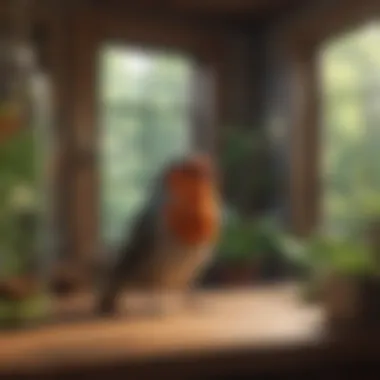
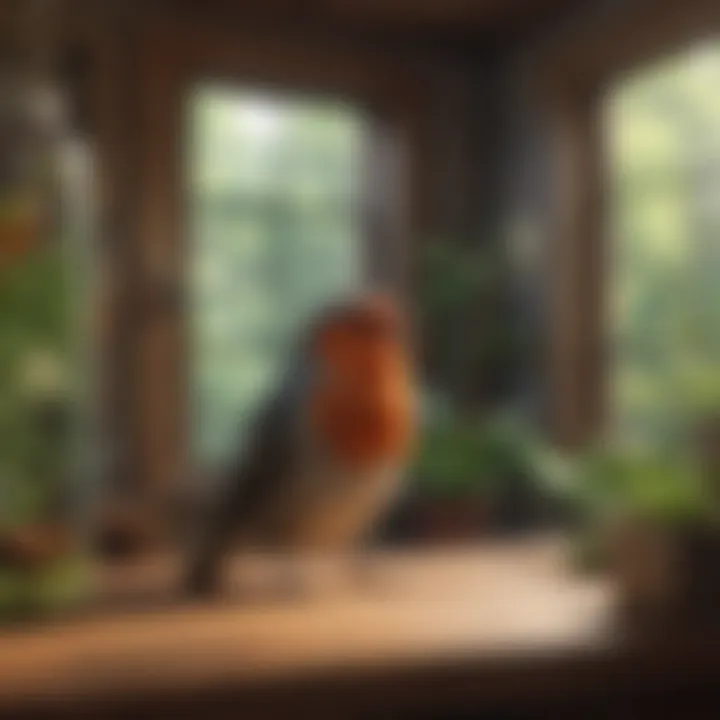
Training pet birds requires patience and consistency. One of the most efficient techniques involves positive reinforcement. This technique encourages desired behaviors by rewarding the bird with treats, praise, or playtime.
- Clicker Training: This method involves a clicker that makes a sound to mark good behaviors, followed immediately by a reward. This forms a clear association for the bird.
- Establishing Routine: A regular schedule for training sessions can help create anticipation, making the bird more receptive. Short, frequent sessions work best to maintain their attention.
- Target Training: Using a stick with a target at the end, birds can be taught to touch it, which can help redirect them or lead them to desired locations.
These methods are viable strategies for addressing common behaviors that owners find annoying. By investing time, pet owners can enjoy a more harmonious relationship with their birds.
Creating a Stimulating Environment
An enriched environment is vital for pet birds’ mental and emotional health. Boredom can lead to problematic behaviors such as screaming or feather-picking. Hence, creating a stimulating environment is essential.
Here are some considerations for enrichment:
- Perches and Cages: Ensure that there are multiple perches at varied heights and widths. A spacious cage encourages exploration and movement.
- Toys: Rotate toys regularly to maintain excitement for the bird. Different textures, colors, and sounds can keep a bird mentally engaged.
- Interaction: Regular social interaction through play and communication is necessary. Birds are social creatures and require stimulation that mirrors their natural behaviors.
Each owner has to figure out fitting activities that speak to their specific bird species. A little effort in these areas can significantly reduce irritation that comes with common behaviors.
Behavior Modification Strategies
Managing your bird's behavior can sometimes necessitate specific strategies for acknowledgment of misbehavior. Understanding bird psychology helps create tailored approaches.
- Identifying Triggers: Pay attention to situations that lead the bird to act out. Once triggers are recognized, owner responses can be adjusted to minimize annoyance.
- Consistency in Response: Ensure that consequences for unwanted behaviors remain consistent, which helps the bird learn appropriate behaviors over time.
- Redirecting Behavior: Instead of punishment, redirect disruptive actions. For example, if a bird is screaming, providing it with a toy can help shift focus.
Incorporating these strategies into daily life can reduce overall frustration for both parties. Behavior management is an ongoing dialogue between the bird and its owner, leading to a much more enjoyable experience overall.
Effective training, environmental stimulation, and behavior modification together create a solid foundation for harmonious bird ownership.
The Role of Enrichment
Environmental enrichment is fundamental for the well-being of pet birds. This concept involves creating a stimulating environment that caters to the natural instincts and behaviors of these animals. Engaging an avian companion through a well-designed space can significantly reduce undesirable behaviors commonly associated with boredom or stress.
Enrichment not only satisfies a bird’s innate needs but also strengthens the bond between the bird and its owner. When complemented with proper training techniques, enrichment can lead to a smug, well-adjusted pet. Institute enrichment in pet bird ownership elevates the experience and often leads to a dramatically reduced annoyance over time.
Understanding Environmental Enrichment
Understanding environmental enrichment starts from recognizing the natural habitats of birds. In the wild, many bird species partake in activities that keep them active. These include foraging, flying, and exploring their surroundings. Their needs come from evolved behaviors that may not be met in captivity.
Additionally, confined spaces often mean limitations. A variety of terrestrial surfaces may not always be available. Thus, offering an environment laden with opportunities for physical and mental exercise significantly boosts well-being.
Investing time in creating safe, engaging spaces for birds eliminates situations that lead to frustration or annoyance. Some crucial elements of enriching environments include:
- Varied Perches: Different heights and textures
- Safe Toys: Chewable, manipulable enriching items
- Solitary Activities: Space for personal time
Types of Enrichment Activities
There is an array of activities that can keep birds entertained and engaged. Tailoring these activities parent species is vital. Common enrichment activities include:
- Toys: Foraging toys that dispense food reward encourage selsuf-feeding.
- Interactive Platforms: A play area featuring different activities promotes both birday and parental interaction.
- Puzzle Challenges: Using treats in a challenging layout educates and fortifies physical connection that helps cdevelopue the compe upkeering of birds.
- Social Activities: Encouraging interactions wiht fellow birds or other pets int he household helps to develop emergint and outssof personality.
Every bird will respond differently, thus experimentation with various activities will determine what resonates with each individual bird.
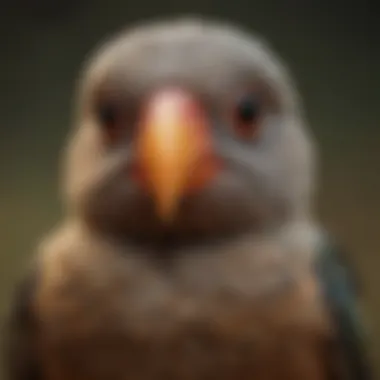
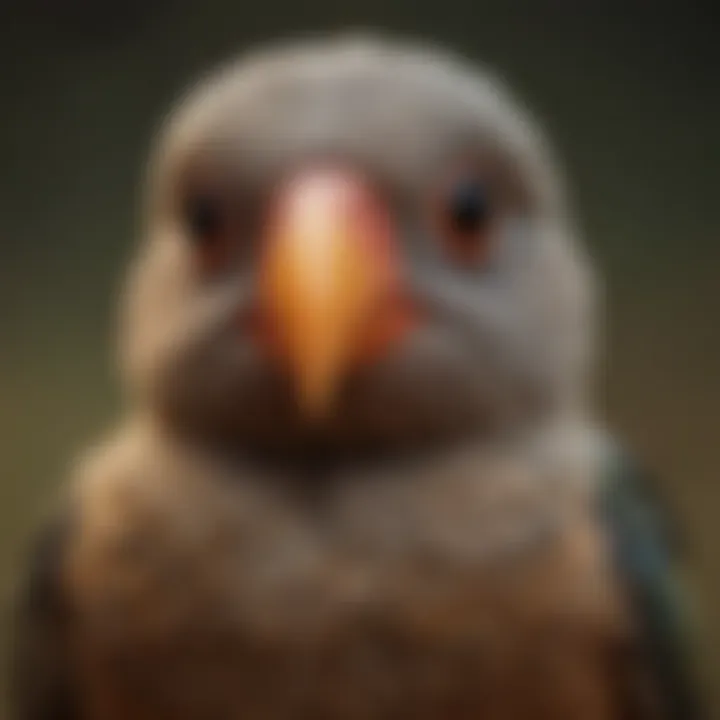
Benefits of Enrichment for Behavioral Management
The benefits of introducing enrichment activities resonate beyond entertainment. Effective enrichment leads to long-term welfare improvements encompassing various aspects of a bird's life.
Implementing environmental enrichment enhances tranquility. A more content bird leads to less frustration, making it easier for pet owners to enjoy their companionship with the pet. This aspect addresses potential annoyance that can stem from common pet bird behaviors, such as screeching or destructive tendencies.
Moreover, engagement activities can help maintain a balance in day-to-day life. This valuable time spent engaging with the bird allows owners to monitor their pets for signs of stress or disenchantment with their environment.
Ultimately the right environmental enrichment ensures a fulfilling experience for both the pet and its owner. Through understanding and commitment, the challenge of managing an annoying pet bird can transform into bonding moments and established trust.
“Engagement is the key to transforming a monotonous cabin into a lively aviary.”
Health and Well-being
Maintaining the health and well-being of pet birds is fundamental to ensuring that these creatures thrive in a domestic setting. This section addresses various aspects that contribute to a fulfilling lives for pet birds, emphasizing the connection between health focus and reducing potential annoyances for their owners. Healthy birds are far less likely to exhibit unwanted behaviors that stem from stress or discomfort.
Identifying Signs of Stress
Birds are complex beings. Stress can manifest in various ways. Owners should look out for changes in behavior, such as excessive vocalization, feather plucking, or decreased appetite. It is vital to recognize these signs early. When a bird exhibits stress, it might be caused by several factors: changes in environment, lack of social interaction, or even illness. A keen eye will help prevent more severe issues. To identify stress:
- Observe sudden changes in behavior.
- Monitor food intake.
- Be aware of excessive preening or hair loss.
Recognizing these signs equips owners with the knowledge needed to adapt and take action timely.
Providing a Balanced Diet
Nutrition plays a key role in the well-being of pet birds. A well-balanced diet fosters optimal health, directly impacting a bird's behavior and disposition. The importance of serving the right mix of seeds, pellets, fruits, and vegetables cannot be overstated. Each specific species has distinct dietary needs. For instance, some birds thrive on seeds, while others might need fortified pellets or fresh produce.
Ensuring variety will help keep birds mentally and physically stimulated. Avocado, rhubarb, and chocolate should be avoided completely as they are harmful to birds. Instead:
- Include leafy greens.
- Offer a selection of fruits such as apples or bananas.
- Use quality bird pellets designed for specific species. This dietary approach can prevent numerous health issues and discourage annoying behaviors linked to poor nutrition.
Routine Veterinary Care
Routine veterinary check-ups are crucial in maintaining a bird's health and ensuring any underlying issues are addressed. Many owners underestimate the importance of finding an avian veterinarian. Just like dogs and cats, birds require regular health assessments.
A vet can offer insights into general health and necessary vaccinations. They can also support in identifying signs of illness that may not be apparent initially. Regular exams can:
- Help detect diseases early.
- Provide guidance about dietary needs and potential adjustments. A proactive approach to veterinary care can lead to optimal health and therefore is essential in mitigating behaviors that may be classified as annoying.
Monitoring and caring for a pet bird's health builds a strong bond and enriches the experience of ownership.
Closure
The conclusion aims to encapsulate the essence of the preceding discussions, providing clear insights into the delicacies of bird ownership. Pet birds can evoke a range of feelings from annoyance to affectionate companionship. Recognizing the shared space between these two emotions is crucial for harmonizing the experience of bird ownership.
Balancing Annoyance and Affection
Navigating the interplay between annoyance and affection in bird ownership can be daunting. Annoyances often arise from natural behaviors such as vocalization or the need for socialization. Yet, these same traits are also part of what makes birds engaging and enjoyable. For instance, the sound of a vocal parrot can be seen as a joyful communication or an alarming intrusion, depending on one’s perspective.
Fortifying a balance necessitates adjustment of both owner expectations and understanding of avian nature. Bonding moments, when properly nurtured, can transform irritating behavior into a testament of the strong relationship shared. Active efforts in training can reduce annoyances, allowing the owner to appreciate the lively expressions of their feathered companions.
Through diligent management of the environment and behavioral expectations, a coexistence laden with affection rather than irritation can be achieved. This ensures that pet birds are seen not merely as sources of annoyance, but as valued companions that enrich our lives.
Final Thoughts for Bird Owners
In summary, the multifaceted love-hate relationship between pet birds and their owners deserves careful consideration. Pet birds undoubtedly require an investment of time and effort, but the rewards often outweigh the challenges. Bird owners should reflect on what they desire from their avian companions, reconciling reality with anticipation.













